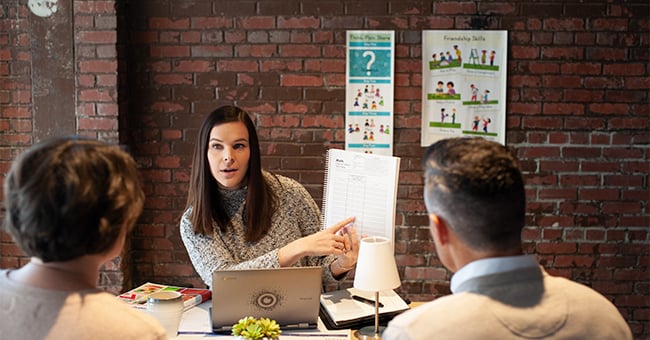
In the second blog of her series, Creating Inclusive Spaces, Dr. Lea Ann Christenson provides educators ways to prepare for the new Dual Language Learners entering their classroom this upcoming school year.
There are many steps you can take before the school year starts to prepare for serving your young DLLs (Dual Language Learners) and their families. Identifying the Hidden Curriculum in your setting and having a plan to explicitly teach and explain this Hidden Curriculum to young DLLs and their families is one of them.
What is the "Hidden Curriculum" in your setting?
Have you ever gone somewhere or done something you had never experienced before? Perhaps a gathering like a wedding or a birthday party where the traditions were different than the ones you observe? Or was it participating in a game that you had never heard of but everyone else knew all of the rules? At first, were you a bit confused as to what was happening? Did you depend on observing the others participating? Did you find someone who could help you learn the procedures and rules? In these situations the traditions, rules, and/or procedures you did not know is the Hidden Curriculum. You had a global understanding of the concept of a wedding, birthday, or game but not the specifics to participate fully.
This can be true for DLLs as they navigate their new school setting which may be much different from the one they once were in and, in the case of very young children, it may be the first time they have attended any school. To prepare your class for young DLLs think ahead as much as possible:
- What are the procedures, rules and way navigating a school and classroom that a child needs to be successful? For example, procedures for going into or leaving the classroom before or after school, school supplies students are expected to bring, lunch procedures, where to hang your coat, or where to sharpen a pencil, etc.
- What background knowledge of the world is assumed in your setting? What are the local customs, weather, holidays, etc. Are some of your units of study based on an assumed body of background knowledge?
Your DLLs come to your class with a wealth of background knowledge however it may not be the same as what is expected in your setting. Find out what a child knows–all children know a lot about their own context–and fill in the knowledge about your local context that they may be missing.
When working with families of DLLs, use this same process to think about what they may not know. Again, all families come to you with a wealth of knowledge however they might not know the Hidden Curriculum of your setting. Beware of school jargon like: Back to School Night, IEP, 504 plan, circle time, learning stations, dramatic play, Open House, etc. Describe exactly what these activities are and precisely how the children and families can participate.
Identifying your Hidden Curriculum is a journey. Try to identify everything you can before the year starts. However, new things will emerge as the year progresses. Once identified, just make sure to explicitly teach and build on the prior knowledge a child brings.
You may be thinking that this can also apply to English speaking children who have moved within the United States and you are right. My family and I moved from California to Maryland. I missed out on several events for parents where participation was expected because they were not described to me in enough detail for me to understand their importance. I did not attend not because I did not care about my children but because I did not know I was supposed to attend.
Think about this the next time a parent does not participate. In addition, even though my children had attended school in the United States and speak English they had to learn Hidden Curriculum the in their new schools by trial and error. One of my daughters came home in tears because no one explained the process for turning in homework to her. Overall, your discovery of Hidden Curriculum and the explicit teaching of what it means is helpful for everyone.
And always remember to use a strength-based lens when thinking about what the children coming to your class can do. Each of them has their own wealth of knowledge. Find out what it is and build on it.
Next time we will discuss how to engage families of young Dual Language Learners by creating a communication plan which includes what to do when you do not speak the same language as your children and families.
About the Author
Lea Ann Christenson, PhD, is an associate professor in the department of early childhood education at Towson State University. She earned her PhD in curriculum and instruction from the University of Maryland, College Park. Her work focuses on early literacy acquisition, English as a second language instruction, and STEAM teaching and learning. She is also the author of Strength in Diversity: A Positive Approach to Teaching Dual-Language Learners in Early Childhood.
Explore This Series
Creating Inclusive Spaces: Supporting DLLs and their Families
Creating Inclusive Spaces: Communication Plans for DLLs
